Ancient Ruins Within the Modern City
The historic center or ‘centro storico’ is an easy place to get lost. It is the quintessential experience to wander Rome’s winding cobblestone alleys, searching for the perfect off-the-beaten path restaurant or a shop with a souvenir you’ll cherish for a lifetime. There is nothing that says “Roman Holiday” like an aperol spritz in the sunshine surrounded by buildings and architecture that reflects the light of Rome in a way that feels like it’s been set up just for your vacation.
When wandering around the city center we highly suggest moving without a specific goal in mind. Allow yourself the pleasure of getting lost. Whether you mean to or not, you will inevitably stumble upon buildings that will leave your mouth hanging open in wonder. However, if you would like to discover some pretty spectacular sites from the Ancient Roman world, here is a list of five incredible ancient sites located right in the city center.
1. The Pantheon
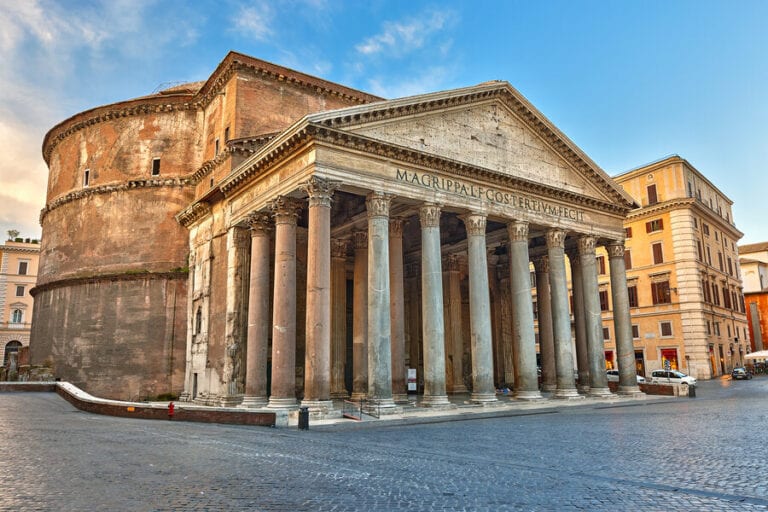
This one goes without saying. A trip to Rome is not complete without seeing this magnificent domed temple turned church. This 2nd century AD building was originally built as a pagan temple dedicated to all of the pagan gods. Since the 7th century it has been an active church, St. Mary and the Martyrs. Be prepared to marvel at the bronze doors, ponder the construction of the dome, and pay your respects at the tomb of Raphael. Make sure to walk around outside as well. The portico and its columns are stunning and it is impressive to observe how dramatically ground level has changed since ancient times.
2. Piazza di Pietra

Right around the corner from the Pantheon lies one of the most charming Roman piazzas. The columns are from the 2nd century and are part of a temple dedicated to Emperor Hadrian by his successor, Antoninus Pius. We find the ruins especially fascinating because of how they are incorporated into more modern buildings! At the end of the 17th century, Carloa Fontana designed a building that was used as a central Customs Office. Later, that building was modified and replaced in the 19th and 20th centuries. The result is a stunning blend of old and new (er). We recommend stopping at one of the lovely bars/restaurants and enjoying the view over a meal or a snack.
3. Largo Argentina
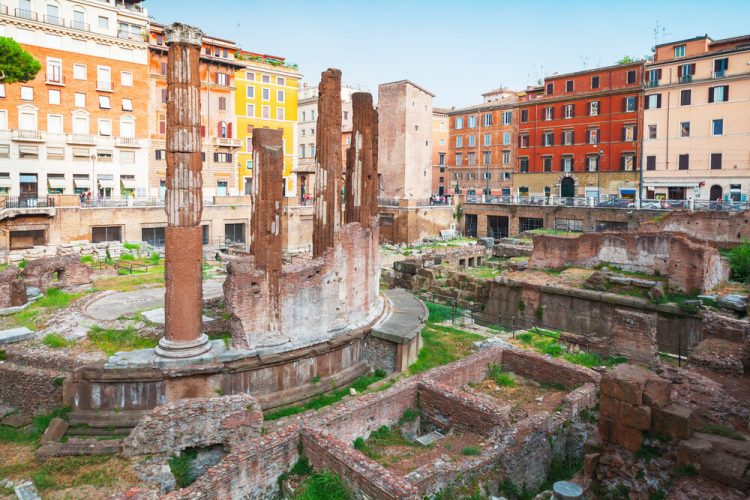
This site dates back to the 2nd century BC, making it over 2,000 years old. The 4 temples were excavated in the beginning of the 20th century and it is the declared location of the assassination of Julius Caesar. The famous stabbing was recounted by Shakespeare as having taken place in the Roman Forum, but history implies that Caesar was actually killed in front of one of these temples. In fact, there’s even a famous Roman Umbrella pine planted right at the location where it is believed the stabbing took place. Today, you’ll notice that the site is filled with furry little creatures. Rome’s cat sanctuary has been unofficially hosting cats since the 1930s but officially operating since 1998.
4. Castel Sant' Angelo
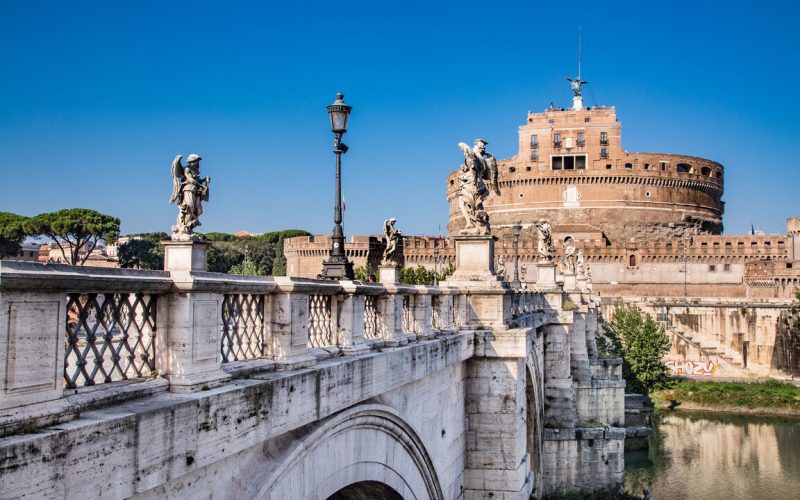
This incredible castle is worth a visit! Originally built in the 2nd century AD as a mausoleum for Emperor Hadrian, Castel Sant’Angelo was converted into a castle in the 14th century. The name comes from a 6th century legend. According to this legend, the Archangel Michael appeared on the top of the mausoleum and sheathed his sword, signifying the end of a plague. Today you’ll find a bronze statue on top of the castle, commemorating the legend. We love how Rome has layers on top of layers and this monument is the perfect place to observe the many centuries of history in Rome. Another fun fact is that the castle is connected to the Papal apartments in Vatican City. The Passetto di Borgo (the fortified corridor that you see winding its way towards St. Peter’s Square was built by Pope Nicholas III and was famously featured in Dan Brown’s Angels and Demons.
5. Ara Pacis and the Mausoleum of Augustus
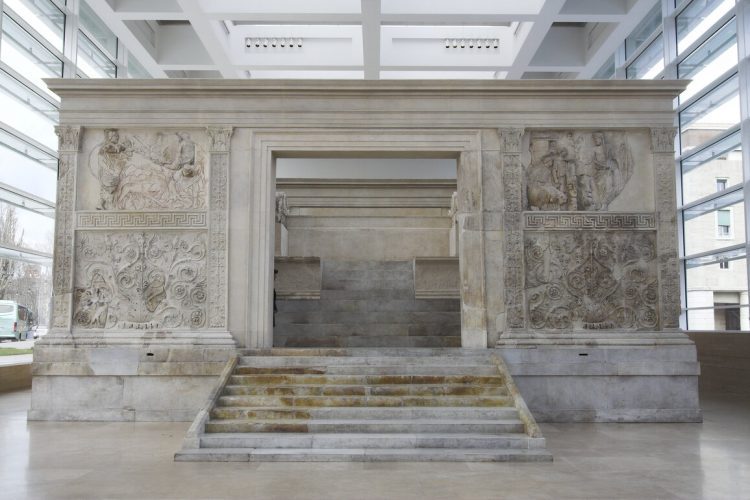
At the time of publishing, Augustus’ magnificent mausoleum is still not opened for access to the public. However both the outdoor archaeological site as well as the modern building that holds his Ara Pacis are an incredible testament to the power and effect that Rome’s first Emperor had on the city’s landscape. The monument that you see was dedicated to Emperor Augustus in 13 AD but the building was completed in 2006. The inside museum hosts a wide variety of exhibits and is worth a visit to see the monument up close.

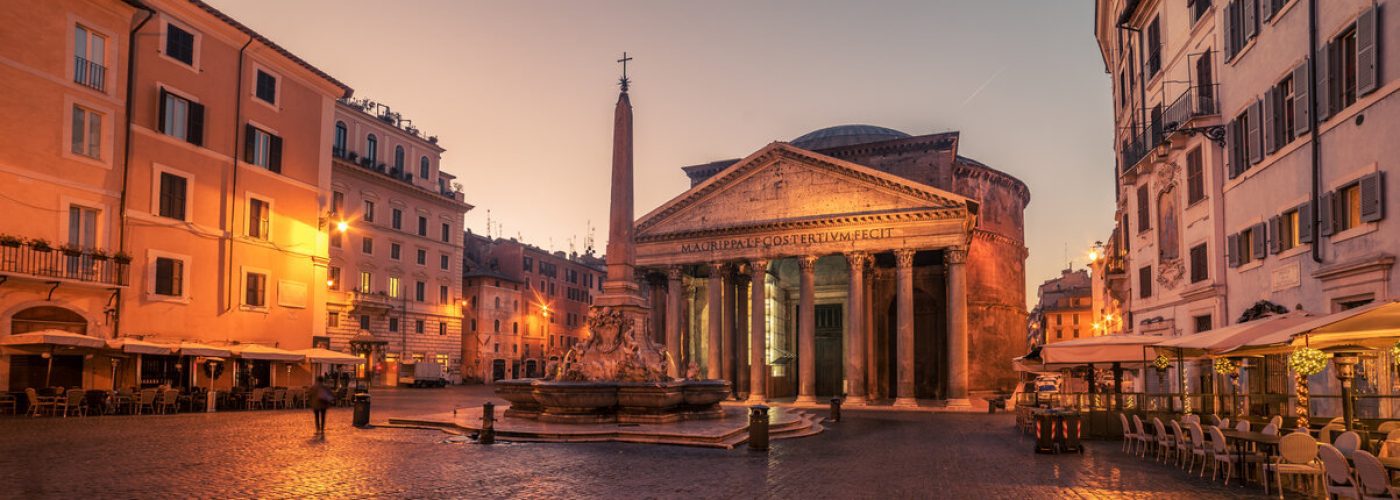
Recent Comments